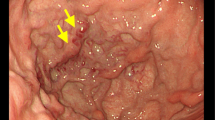Abstract.
Well-known arterial complications after liver transplantation comprise thrombosis and major stenosis, which usually necessitate a retransplantation procedure. In our institution, in a series of 165 consecutive liver transplantations, we report the first recognized case of a splenohepatic arterial steal syndrome. This is characterized by an arterial malperfusion of the hepatic graft caused by a marked diversion of blood flow to a significantly enlarged spleen, which leads to major ischemic damage of the hepatic graft. After splenectomy the perfusion through the hepatic artery increased substantially and the graft was salvaged, with a following favorable clinical course. Splenohepatic arterial steal syndrome may ultimately result in graft loss if it is falsely diagnosed or recognized too late. A post-transplantation splenectomy represents a successful therapeutic approach; alternatively a primary arterial anastomosis to the aorta prevents the development of this condition.
Similar content being viewed by others
Author information
Authors and Affiliations
Additional information
Electronic Publication
About this article
Cite this article
Geissler, I., Lamesch, P., Witzigmann, H. et al. Splenohepatic arterial steal syndrome in liver transplantation: clinical features and management. Transpl Int 15, 139–141 (2002). https://doi.org/10.1007/s00147-002-0386-0
Received:
Revised:
Accepted:
Published:
Issue Date:
DOI: https://doi.org/10.1007/s00147-002-0386-0




